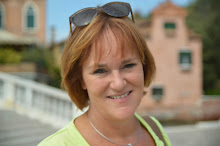- white drawing paper A4 size
- markers
- black markers, thin and thick
- pictures of the artwork of Noir
Typical of Noir are bright coloured profiles, reduced to an icon with a big nose, thick lips and saucer-like eyes.
The East Side Gallery (see photo) is a 1.3 km long section of the wall near the center of Berlin and probably the largest open air gallery in the world. Here you'll find the work of Thierry Noir. After looking at pictures of the work of Thierry Noir, children have to get heads in the style of Noir. hoofden tekenen in de stijl van Noir: profile heads looking to the right or left. The sheet has to be filled completely. Choose three colours marker. Outline everything with a thick black marker. Colour the remaining white parts with another colour or fill the spaces with a pattern in thin marker..jpg)
.jpg)
.JPG)
.JPG)
.jpg)
.jpg)
.jpg)
.jpg)
.jpg)
+(2).jpg)
.jpg)
.jpg)
.jpg)
.jpg)
.jpg)
.jpg)
.jpg)
.jpg)
.jpg)
.jpg)
.jpg)
.jpg)
.jpg)
.jpg)
.jpg)
.jpg)
.jpg)
.jpg)



.jpg)
.jpg)
.jpg)
.jpg)
.jpg)
.jpg)
.jpg)
.jpg)
.jpg)
.jpg)
.jpg)
.jpg)
.jpg)
.jpg)

.jpg)
.JPG)
.jpg)

.jpg)
